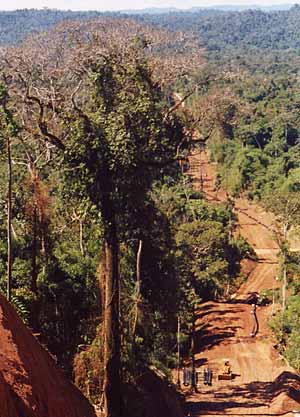CAMISEA PROJECT
Location: Southern Peru
Client: Transportadora de Gas Peru (TGP)
Objective: Assist in establishing erosion control
specifications, standards and to audit the
application of the standards.
The Camisea project is a major development being built
to transport natural gas and gas liquids to the Peruvian
coast from the Urubamba River in the upper central Amazon
region. Two lines have been installed, a 32”inch
pipeline delivering natural gas to Lima and a 14”liquids
line terminating at Pisco on the Pacific coast. The
total line length to Lima is more than 700 km. The line
traverses extremely rugged terrain in the jungle and
high sierra crossing the Andes at elevations of up to
4500m. Rainfall in the jungle area is very high. The
underlying bedrock in the approximately 200km long jungle
portion of the route is predominantly highly weathered
mudstone, siltstone and sandstone, and is so soft that
it can be trenched using an excavator. Most soils are
lateritic with high clay and silt content. |

Amazon of Peru Pipe line project
|
Terra Erosion Control
and associates were retained to help establish erosion
control specifications and standards to be used in the
construction and restoration phase of the project, to
audit the application of the standards, and to provide
instruction and assistance to TGP construction compliance
inspectors and the major pipeline contractor. Most of
the field work was in the jungle portion of the route
where there were significant erosion and instability
problems. In the jungle areas, trials were established
utilizing biotechnical slope stabilisation techniques
to stabilise fill slopes and shallow landslides. A list
of species suitable for biotechnical work was developed
by a team of field practitioners working with TGP with
the help of local native (Matsiguenka) plant specialists.
Woody species used included; Gynerium sp., Tabebuia
rosea, Chorisia insignis, Erythrina falcata, which were
utilised in a variety of brush layers, fascines and
live staking techniques. Nursery establishment was begun
to provide stock for the final restoration phase. A
seed-collecting program was also established for native
grasses and legumes to be used during the various restoration
phases of the project.
|

